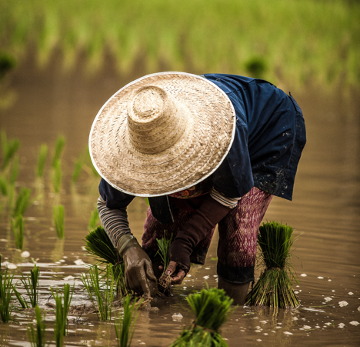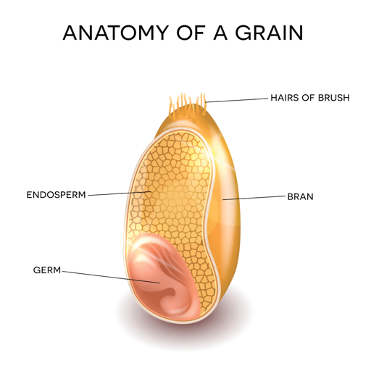
A lot of my clients rely on white rice or pasta for quick meals. I thought I would write this blog about the benefits of brown rice and how to prepare it. Hoping to convince you all that brown rice is the way forward.
Brown rice is a whole grain and a major source of complex carbohydrate, fibre, minerals and B vitamins. Once the husk is removed the rice is sold as whole or brown rice. Otherwise it is milled and polished at least three more times to remove the bran and the germ from the endosperm, producing white rice.

1. Slower energy release
White rice is quickly digested to sugar increasing the potential for blood sugar spikes which are associated with increased risk of type 2 diabetes and insulin resistance. The carbohydrate in brown rice is wrapped in fibre which our bodies can’t digest. This means brown rice is digested to sugar much more slowly with a much slower release of energy.
2. Fitter and fuller with fibre
Whole grains and fibre keep us full for longer which can help with weight management and keep our gut bacteria happy. This is turn supports our immune system, mental health and risk of multiple chronic diseases.
3. Good for the heart
The British Heart Foundation says: “Higher intakes of fibre are also associated with a lower risk of heart and circulatory disease, and some cancers.” Brown rice may therefore improve heart health due to its fibre content as well as another specific compound found in its outer layers.
4. Packed with nutrients
Most of the nutrients in a whole grain of rice can be found in its outer layers which are removed during the production of white rice. So brown rice is more nutritious being a better source of vitamins and minerals, including calcium, iron, phosphorous, magnesium, selenium, vitamin B1 (thiamine) and vitamin B6 (pyridoxine). Brown rice has 10 times the amount of B1 compared to white rice unless it is fortified. Vitamin B1 deficiency (beriberi) has been known to affect populations with a heavy reliance on white rice. This affects the heart, nerves and the muscles.
The protein content and the quality of whole grains is also much greater than that of refined grains.
5. Antioxidant supply
In January 2023, researchers identified the main antioxidant of brown rice as cycloartenyl ferulate (CAF). This not only protects cells it also boosts the production of antioxidants within other cells.
CAF is hybrid compound of two different types of antioxidant (polyphenols and phytosterols) which may help lower cholesterol levels, suppress inflammation and reduce chronic disease risk.
6. Soaking
This not only reduces cooking time but lowers the arsenic content which can be high in rice according to the FDA. The soaking also makes the nutrients in rice more absorbable because it helps to remove the phytic acid content. The latter can combine with minerals such as magnesium and zinc and block their absorption. Whole grains are effectively seeds so they contain enzyme inhibitors which are activated by water and warmth in preparation for growth. Soaking in essence pre-digests the grain making it’s nutrients more readily available.
I personally soak brown rice overnight if possible with water and a dash of lemon juice or apple cider vinegar. Even a few hours is helpful if I forget the night before. I am constantly surprised when discussing this with my older clients how many will tell me that their parents used to do this. We seem to lose many of our food traditions with the speed of modern life.
7. Leftovers
Cool quickly and store in fridge within an hour of cooking. Eat within 24 hours or you can freeze it. Defrost it in the fridge and reheat thoroughly.
Refs: https://www.fda.gov/food/environmental-contaminants-food/arsenic-food-and-dietary-supplements; Fallon, S. and Enig, M. G. (1999) Nourishing Traditions: the cookbook that challenges politically correct nutrition and the diet dictocrats. NewTrends Publishing Inc, Washington, DC.




